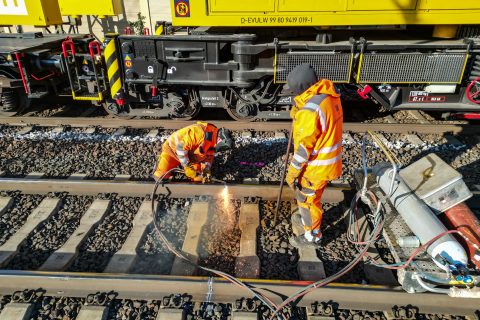Nexrail unveils Europe’s first hybrid shunting locomotive

Nexrail, a European locomotive leasing company, presented a new hybrid locomotive for shunting running on battery and diesel power. This is the first of its kind in Europe “and probably the world actually, but I am not 100 per cent sure”, as the company’s CEO Luuk von Meijenfeldt told RailFreight.com.
The first of 50 DE18 Stage V Smart Hybrid shunting locomotives, which will be built by German manufacturer Vossloh, was recently presented by Nexrail during an event in France. “The first 30 will be commissioned as of November this year. The timing of the other 20 are still being discussed”, von Meijenfeldt. The locomotives will be able to run in Belgium, France, Luxembourg and Germany, and they are equipped with ETCS and an upgrade option to level 2.
“For some countries, like the Netherlands, Denmark and Czechia, we may be able to upgrade the ETCS signalling software and go through an ETCS-only homologation. But if we want to be able to drive on so-called class-B tracks (with legacy, national signalling), we would need to install that as well. This is complex and expensive. The chance that we will do that is small”, von Meijenfeldt explained.

Advantageous for construction sites
The locomotive will be equipped with a battery and a Stage V engine which can run on HVO. The battery will also allow the locomotives to operate noise-free for up to an hour, which shall be advantageous especially in construction projects, as Nexrail pointed out. This, according to the company’s CEO, is one of the aspects that the industry particularly appreciates. “It is a special feeling to drive in such a big locomotive without the noise and vibrations of an 1800kW 12-cylinder diesel engine”.
Locomotives, however, remain expensive beasts. “Modern diesel locomotives are significantly more expensive than their predecessors, mainly due to ETCS and stage V engine requirement”, von Meijenfeldt specified. For locomotives already meeting these requirements, he estimates an additional 10 per cent in costs which, he claims, would be easily offset by lower diesel expenses.
Also read:
- Freightliner goes in-house with onboard digital signalling
- Italy to start DAC tests, industry remains highly sceptical
- ‘Rail magnetic levitation can work without infrastructure upgrades’
You just read one of our premium articles free of charge
Want full access? Take advantage of our exclusive offer





